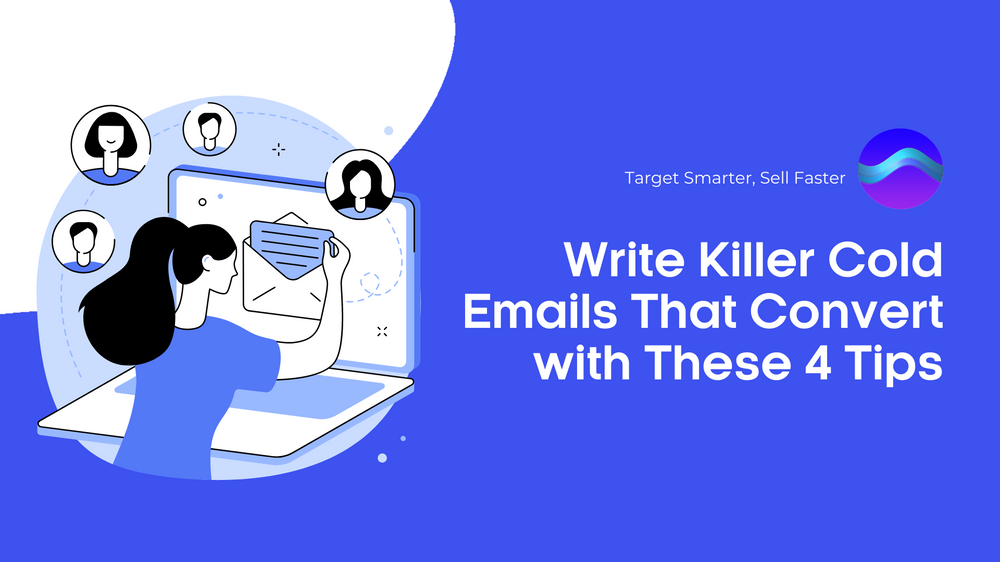Are you struggling to get your cold email campaign off the ground? You’re not alone.
Cold emailing can be a tough nut to crack. But once you get the hang of it, it can be an incredibly powerful tool to grow your business. The key is to write killer cold emails that convert.
Here’s how you can do it.
What Is a Cold Email?
A cold email is sent to a recipient who doesn’t know the sender. Cold emails often introduce someone new to a product or service or promote a special offer.
Cold emailing can effectively reach new customers, but it’s essential to do it carefully. Sending too many cold emails can be considered spam, and ensuring that the emails you send are relevant and interesting to the recipient is essential.
How Can You Write a Cold Email That Converts?
There’s no doubt that cold emailing can be a great way to generate leads for your business. But if your cold emails aren’t converting, it’s a wasted effort. With an average of 333.2b emails sent and received worldwide every day, what would make your email stand out?
So, how can you write a cold email that actually converts?
1. Create Your Ideal Client Profile
When writing a cold email, one of the most important things you can do is create an ideal client profile. This will help you target your email to the right people and ensure that you are providing them with the information they need.
First, you need to consider who your ideal client is. What are their demographics? What are their interests? What needs do they have that your product or service can address? Once you have a good understanding of your ideal client, you can start to craft your email.
Your email should be designed to grab attention and clarify what you can offer. It should be short and to the point and include a call to action. Make sure that you personalize the email as much as possible and target it to your ideal client’s specific needs.
2. Decide on Your Campaign Cadence
One of the most important decisions you’ll make when planning a cold email campaign is how often to send emails. This is known as your campaign cadence, and it can have a significant impact on your results.
The frequency of your emails will depend on a number of factors, including your industry, the size of your list, and your goals for the campaign. Generally, it’s best to start slow and increase the frequency if you’re not getting the desired results.
You’ll want to send more frequent emails if you’re trying to generate leads. On the other hand, if you’re simply trying to build awareness or nurture relationships, you can send emails less often. It’s essential to strike a balance with your email frequency.
If you send too many emails, you’ll risk losing subscribers. But if you don’t send enough, you won’t see the results you’re looking for.
The best way to find the right campaign cadence is to test different frequencies and see what works best for your business. Try sending emails once a week for a few weeks, then increase the frequency to see if you get better results.
3. Invest in Creating the Best Content
In today’s digital world, there’s a lot of noise. Your potential customers are bombarded with content from all sides, and it can be tough to cut through the clutter.
That’s why it’s so important to create quality content that grabs and holds attention.
When writing a cold email, the most important thing you can do is invest in creating the best content possible. This means crafting a well-written, engaging email that will capture your recipients’ attention and encourage them to take action.
4. Perfect the Email Structure
When writing a cold email, the most important thing to keep in mind is to invest in creating the best content possible. This means crafting a well-written, engaging email that will capture your recipient’s attention and encourage them to take action.
There are a few key elements that should be included in every cold email to make it successful.
First, you need to have a strong subject line that will grab the reader’s attention and make them want to open the email.
Second, the opening sentence should be short and to the point, highlighting what you have to offer and why they should care.
Third, the body of the email should be well-crafted, providing value and further explaining what you have to offer.
Finally, you need to have a solid call to action that tells the reader what you want them to do next.
Final Thoughts
By following these tips, you can write a cold email that reaps results. Just remember to take your time, personalize your message, and offer your recipients something of value, and you’ll be on your way to success.
If you need help handling business-to-business marketing campaigns, partner with us at Acquisent. We are an account-based marketing agency focused on helping entrepreneurs engage their prospects better. Let us change the way you generate leads — book a demo today!


